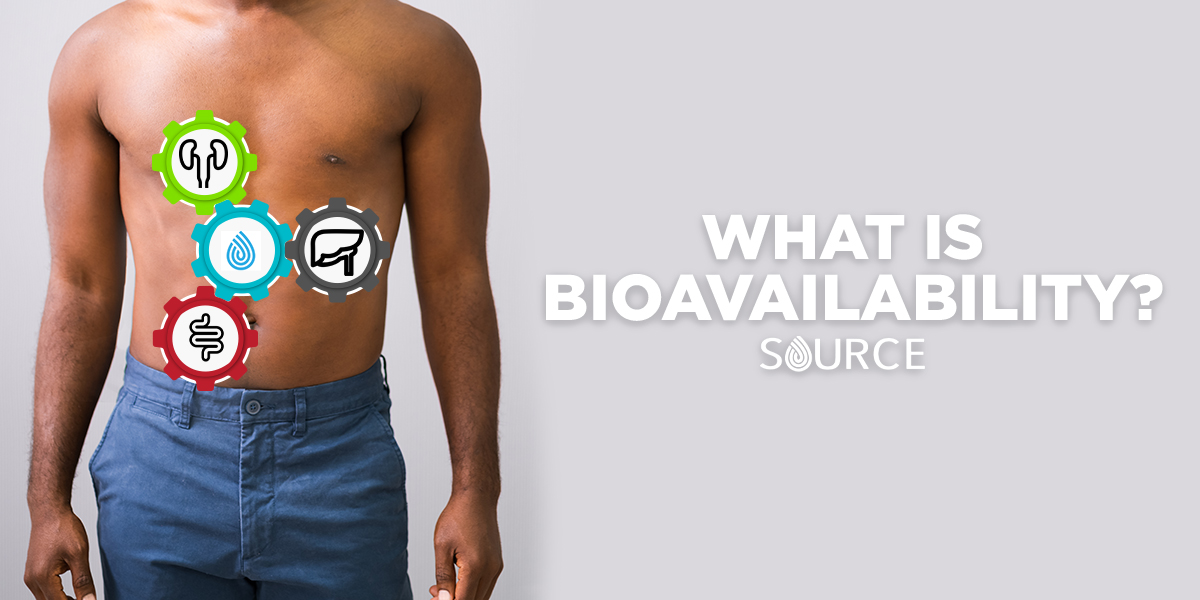CBD Oil for Health
CBD Bioavailability: How Much Does Your Body Absorb?
Whether you’re new to CBD or have been using it for years, we all have one major thing in common – we all want to know how to get the most from it. We all want to know it’s most effective when we use it – so we can take advantage of all of its powerful benefits.
And knowing the answer to that requires a conversation about CBD bioavailability.
Really any conversation about the “best” way to use CBD has to touch on bioavailability. So what is bioavailability, and how does it affect your experience with CBD oil?
What is Bioavailability?
Bioavailability refers to how much, and at what rate, something gets absorbed by your bloodstream. You want to know this rate because it helps you determine how much you need to take (and how to take it) to get the best results. Otherwise, you may not feel the desired effects.
Today we’re talking about CBD bioavailability, but this isn’t just a CBD thing. For example, all vitamins and minerals, and many phytochemicals, vary in their rates of bioavailability. With calcium, for example, your body only uses about 30-40% of what you take in. With manganese it’s only about 5%. So, just because you take in a bunch of nutrients, that doesn’t mean your body is using 100% of it. That’s just the way it works.
Knowing that, you can see why it’s important to understand the bioavailability of CBD and how to use it best.
CBD Bioavailability
Unfortunately, on its own, CBD isn’t super bioavailable. If you take CBD all on its own, many of those valuable CBD molecules end up making their way to the liver, where they’re broken down and disposed of. And that’s a waste (pun intended).
Thankfully, there’s an easy fix. When you mix CBD with a carrier oil, like coconut oil or hemp oil, it becomes much more efficient (like 3X more efficient!). This is because CBD (like all cannabinoids) is fat-soluble so it dissolves in oil rather than water. By infusing CBD in a saturated fat, it enhances its bioavailability dramatically.
Here’s the science behind it: since lipids (fats) can be absorbed directly into the intestinal walls, rather than having to pass through your digestive system, a fat-containing substance like coconut oil can maximize the bioavailability. Scientifically, this is referred to as intestinal lymphatic transport. Fancy, no?
You may have noticed that most CBD oils are made with coconut oil as a carrier. This is because coconut oil has more saturated fat, so it can break down and carry more CBD molecules, and ultimately deliver more to your cells.
So – Rule #1 – Find a CBD that’s infused in a carrier oil. Like many others, we like coconut oil best. Read this to see more about carrier oils in general.
Does How You Take CBD Matter?
CBD bioavailability also has a lot to do with how you take it. Once the CBD gets in your bloodstream, it moves throughout your body and interacts with CB1 and CB2 receptors in the endocannabinoid system. That’s where the magic happens. So, your main goal should be to get as much of it as possible into the bloodstream.
There are many different ways to use CBD: as an oil (ingested), sublingually (under your tongue), inhaled, or even topically. All of these different methods determine how much gets there.
Let me explain:
- When you ingest CBD oil, in a capsule for example, various research studies put the bioavailability anywhere from 6-20%.
- When you use it sublingually, that number goes up to anywhere from 12-30% – with a faster absorption rate (the time it takes to work).
- Vaping is even higher, and the effects come on more quickly – but don’t usually last as long as with sublingual.
So, we always like sublingual application – more of the CBD makes its way into your bloodstream, it works faster than ingestion and lasts longer than vaping.
Final Thoughts
Like so many other vitamins and minerals, CBD is incredible, even in it’s natural state, but sometimes it needs a little help to be as effective as it has the potential to be! And that’s ok – we all need a little support sometimes.
Just remember – how you take CBD impacts bioavailability, and so it impacts how well it will work. For best results, go with a CBD infused carrier oil and take it sublingually.

